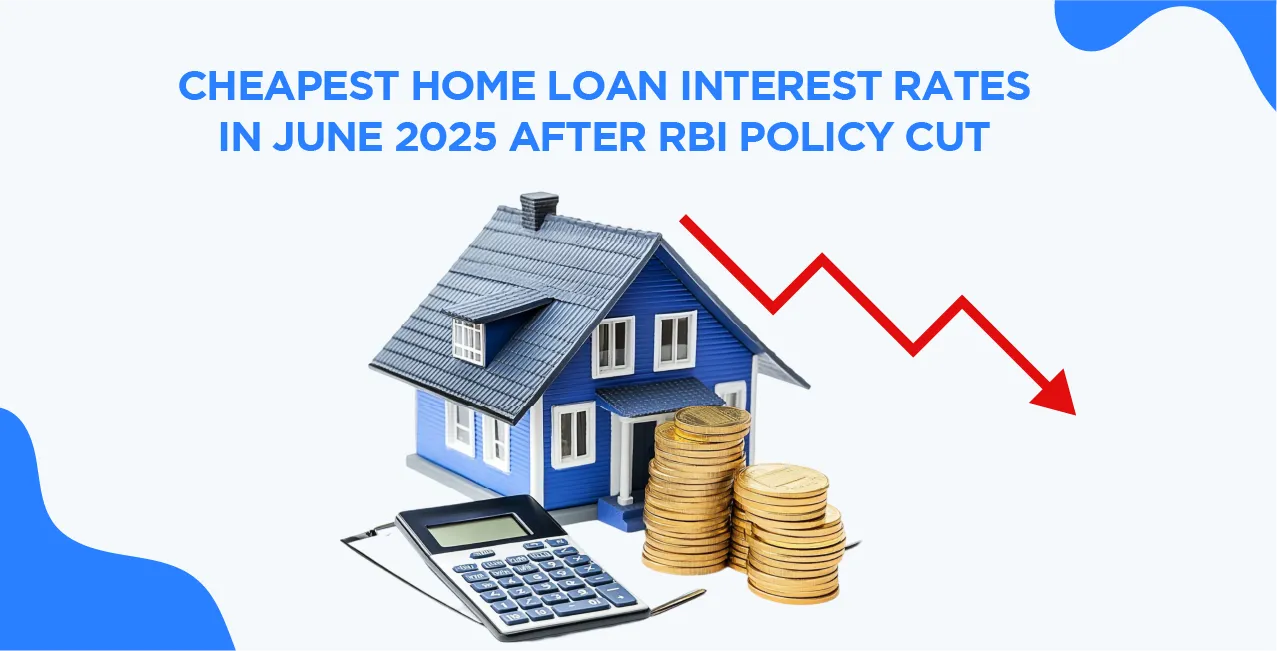
Author
LoansJagat Team
Read Time
4 Min
01 Aug 2025
AHFC Loans To Increase To ₹2.5 Lakh Crore By FY28-End: ICRA
Affordable housing finance is set for a sharp rise in India iñ 2028. Can this change the way lower and middle-income families borrow to build or buy homes? That is what the latest report from rating agency ICRA, released in July 2025, points to.
According to the report, the assets under management (AUM) of Affordable Housing Finance Companies (AHFCs) are expected to grow to ₹2.5 lakh crore by the end of the financial year 2028.
This is a major jump from ₹1.4 lakh crore recorded at the end of March 2025. The overall non-bank mortgage portfolio of Non-Banking Financial Companies (NBFCs) and Housing Finance Companies (HFCs) is also projected to expand from ₹13 lakh crore in FY25 to ₹20 lakh crore by FY28.
How The Segment Has Grown?
The report explained that AHFCs currently hold nearly 11 percent of the total mortgage book in the country. These companies focus mainly on small ticket loans aimed at first-time home buyers and self-employed customers.
The sector is expected to grow because demand for affordable housing is steady and many borrowers have limited access to unsecured loans.
ICRA also noted that the borrower mix is healthy. A large share of customers are self‑employed, a group that often struggles to get loans from traditional banks. These loans are usually small in size and are mostly used for building homes on their own land.
Around 40% of the current affordable housing finance portfolio comes from these self‑construction loans.
To understand the segment better, the following table compares the size of the mortgage book across categories:
This means affordable housing loans will jump by nearly 80% in 2028, outpacing the broader mortgage market. For self-employed buyers, often locked out of traditional loans, this surge signals easier access to home financing.
Financial Health And Performance
Affordable housing finance companies (AHFCs) are growing fast, but are they financially strong? A study by ICRA, which looked at companies covering 70% of this market, says yes.
Bad loans, called gross NPAs, have been almost the same for three years, just 1.1–1.3%. This means most people are paying their loans on time. The cost of keeping money aside for bad loans (credit cost) is also very low at 0.3%.
On top of that, these companies give loans that are only about 55% of the property value (LTV). So even if someone defaults, the house is worth more than the loan. Their profits, measured by RoAMA, are also steady at 3.5–3.6%.
AHFCs are in good health. They are lending carefully, making stable profits, and keeping risks low.
Competition And Operational Challenges
The future looks bright, but AHFCs also face a few hurdles. Big housing finance companies and NBFCs are now entering the affordable housing market. This could force AHFCs to lower loan rates, which will reduce their profits.
Running these companies is also costly. They depend a lot on branch offices and staff to give and collect loans, unlike bigger players who can work more digitally.
ICRA says these companies currently borrow about 3.5 times their own money (gearing). That is safe for now, but if they borrow too much without adding equity, it could be risky.
To stay ahead, AHFCs must cut costs, improve efficiency, and borrow wisely. Competition will test how smartly they can grow.
Conclusion
ICRA has given the affordable housing finance sector a stable outlook for the next three years i.e. 2028. Demand for budget homes is strong, and disciplined lending can keep growth on track.
The impact goes beyond housing. By financing first-time homebuyers like shop owners, gig workers, or small farmers,AHFCs can boost local economies and create jobs in smaller towns.
But the success of AHFCs will depend on balancing growth with caution. They must stay efficient, maintain capital strength, and prepare for any economic shocks If they manage this well, by FY28 they could become a strong pillar of India’s housing market, helping millions achieve the dream of owning a home.
Other News Pages | |||
Retail Mortgage Loans by NBFCs, HFCs to Hit ₹20 Trillion by FY28 | |||
About the Author

LoansJagat Team
‘Simplify Finance for Everyone.’ This is the common goal of our team, as we try to explain any topic with relatable examples. From personal to business finance, managing EMIs to becoming debt-free, we do extensive research on each and every parameter, so you don’t have to. Scroll up and have a look at what 15+ years of experience in the BFSI sector looks like.

Quick Apply Loan
Subscribe Now
Related Blog Post

LoansJagat Team • 10 Jun 2025

LoansJagat Team • 06 Jun 2025

LoansJagat Team • 22 Sep 2025